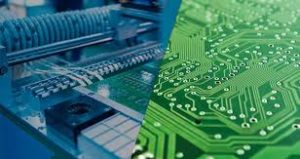Flex Printed Circuit Boards (Flex PCBs) are changing the electronics industry designing flexibility and reliability not adapted by the latter Rigid PCB boards. In the following article, we are going to talk about main advantages of Flex PCBs here and how they affect todays electronics in particular with a few data´s & facts which might provide further information on their huge improvements.
Enhanced Design Freedom
Flex PCBs offer amazing design customizable, flex boards can form to the shape of the circuit as opposed designing an electronic device around a rigid circuit board. Flexibility in this gel permits the design of new and compact products, an important feature for today's wearable tech, medical devices and phone-based consumer electronics. Bending and folding reduce the volume of the device by up to 60%, making their design much more elegant also in terms of ergonomics.
Reduced Weight and Space
The most interesting benefit of Flex PCBs is that it requires a lightweight design and space. Materials: Flex PCBs are developed from more flexible materials like polyimide or polyester, which is mPuPCh lighter than the rigid fiberglass your standard computer motherboard. Based on one study, flexible PCBs can deliver up to 70% weight savings and reduce the space taken by around 75%, which make them amenable for aerospace application where weight is a critical factor.
Greater Dependability and Longevity
Flex pcb is best to work under the worst conditions that are needed. This flexible design also alleviates the stress on solder joints and connectors which are common failure points in rigid PCBs. This helps them stay live in dynamic applications where the PCB will have to be twisted and deformed continuously. With the Cycle Test data indicating that a Flex PCB can bend 500000 times without breaking makes them ideal for use in Defence and Automotive sectors where durability is of paramount importance.

Improved Heat Dissipation
Flex PCBs have good thermal characteristics, despite being thin profiles. Polyimide, one of the most common materials for Flex PCBs, is thermally stable and capable of withstanding high temperatures far better than rigid PCBs to distribute heat evenly. Such a feature is crucial for all high-perform semiconductor electronics where heat can ruin your component in terms of functionality and lifespan. According to data, Flex PCBs can improve thermal management up to 15% (versus traditional PCBs).
Simplified Assembly Processes
Flex PCBs can simplify the assembly process of electrical products Printed circuit boards are capable of combining several PCB functions onto one singular unit, therefore greatly diminishing the requirement for connectors and cables — streamlining an overall design and assembly process. This integrated approach can decrease assembly time and cost by 50 percent or more, which represents significant value — especially in high-volume applications.
Long-term Cost Savings
At first, Flex PCBs can be more expensive than rigid PCBs but they saved great amounts in the long-term. This helps to reduce maintenance and repair costs by eliminating numerous interconnects, connectors, and wiring harnesses. Furthermore, Flex PCBs are more robust and reliable than rigid boards such that they have less failures to begin with which helps reduce warranty claims by 40-60%, resulting in savings of up to 20% over the life of the product.
Flex PCBs Quick Guide in Summary The application of Flex patterned is a breakthrough design and utilization, which will make electronic products more secure, compact and efficient. Flex pcb technology is not only able to enhance product performance, but also create a new possibility in electronic design and demonstrate its increasing role in the future of electronics manufacturing.